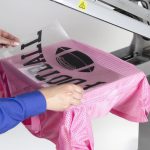Nike, Inc. last week attended the World Economic Forum (WEF) Annual Meeting 2014 in Davos, Switzerland, to discuss the threat of climate change.
The Annual Meeting brings together top business leaders, politicians and visionaries to address environmental and health issues facing the world. At this year’s gathering, themed “The Reshaping of the World: Consequences for Society, Politics and Business,” WEF dedicated a full day to climate-related discussion and took the opportunity to launch its new report “Towards the circular economy: Accelerating the scale-up across global supply chains”.
In response to the report’s release, Nike Inc. VP of Sustainable Innovation Hannah Jones, who participated in WEF panels, shared Nike, Inc.'s vision of a circular economy one that includes harnessing innovations to design out waste and collaborations to bring about lasting and meaningful systems change.
Under the title, “How can companies leave a lighter footprint?,” Ms. Jones wrote:
“As the world enters an era of unprecedented change, today’s business models face considerable unpredictability. We know that as the earth’s population grows, the constraints of a planet with finite resources will become increasingly apparent. Traditional models of manufacturing and distribution have inherent inefficiencies, with a growing spotlight on energy costs and environmental concerns. The ability of businesses to thrive and grow in the future is dependent on navigating these risks, including many factors beyond our immediate control.
But with such risks come unprecedented opportunities. Innovative new approaches and disruptive business models are needed more today than ever before. The opportunity to design the future has never been greater.
At Nike, we believe that in order to continue to thrive we cannot wait to see what uncertainty brings; instead we must create the market conditions for growth. We build our business by decoupling our growth from resources that are becoming increasingly scarce. This isn’t our sustainability strategy, it’s integral to our business strategy.
This is not a new approach for Nike. We’ve been investing in ways to design products with better performance and lower environmental impact for years. This includes taking an active role in defining the future of sustainable materials. We know that about 60% of the environmental footprint of a pair of Nike shoes is in the materials used to make them. When you multiply that across our business and across the consumer goods industry, it’s clear to us that innovation in sustainable materials is a huge challenge.
The challenge to create better materials pushes us to innovate in a world where there is no finish line. A great example is our Nike Flyknit technology. It’s a new way to knit a shoe upper out of what are essentially a few single threads. It allows greater performance for the athlete because it is lighter and offers a more custom fit. It’s better for the planet because it drastically reduces waste from the upper production process.
While Flyknit and other Nike-led technologies have greatly advanced the integration of sustainability and performance, materials innovation is not a problem we can solve alone. Creating a sustainable palette of materials would be disruptive to the world of production, but it’s also incredibly complicated. The production of Nike footwear and apparel is contracted to around 765 factories globally. Materials for those products are supplied by hundreds more vendors. And those products use a palette of more than 16,000 materials. And that’s just Nike’s supply chain.
It is clear that no single company, organization or government has the ability to tackle this innovation challenge on their own. Instead, it will require new models of collaboration. We need to catalyse capital, capabilities, science and technology and resources far beyond the boundaries of our own supply chain. To tackle massive systemic challenges like those in the materials and manufacturing industries, Nike is harnessing the collective power of unconventional collaborations. Our ability to positively influence the systems in which we operate is critical to our future success. We call this “systems innovation”.
By working with other companies, NGOs, government agencies and stakeholders across the system, we can build a shared vision for addressing our toughest sustainability challenges. By tapping into this collective genius, we will all be better positioned to advance our business models and innovate at entirely new levels.
We are not alone in seeing the power of systems innovation two of our initiatives were recently featured in Harvard Business Review’s annual list of 10 Sustainable Business Stories Too Important to Miss.
LAUNCH, our strategic collaboration with NASA, the US Department of State and the US Agency for International Development (USAID), is an open innovation platform that through 2020 will focus on transforming the systems of low-impact materials and manufacturing. Our first sustainable materials challenge this year identified 10 potentially game-changing ideas and technologies.
While we might appear to be an unconventional coalition, we discovered we have much in common. We believe the future will look quite different than it does today, that the world needs bold new ideas to bring about positive change, and those ideas need nurturing to take root and scale.
LAUNCH is just one example of how a diverse group can work together to harness solutions for a new, circular economy where what we make and how it’s made begins with a systemic perspective. And I believe it is just the beginning.
Incremental change won’t get us to where we need to go, and it won’t get us there fast enough. Using sustainability as a lens for innovation, Nike will continue to develop new technologies and approaches to disrupt the status quo. As one company, even as a market leader, we recognize we cannot effect systemic change on our own. The world needs ambitious solutions that will require collaboration across sectors, disciplines and businesses to innovate across entire industries to create a future that ultimately allows us all to win.”















